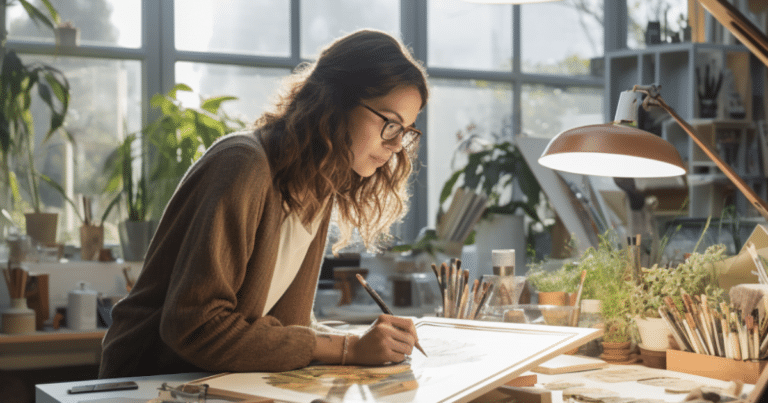Tracing has undoubtedly been a topic of debate in the art world. As an artist, you might have pondered “is tracing cheating?” or an acceptable practice.
It’s essential to recognize that tracing has been a part of art creation for centuries, and different opinions and viewpoints surround this topic.
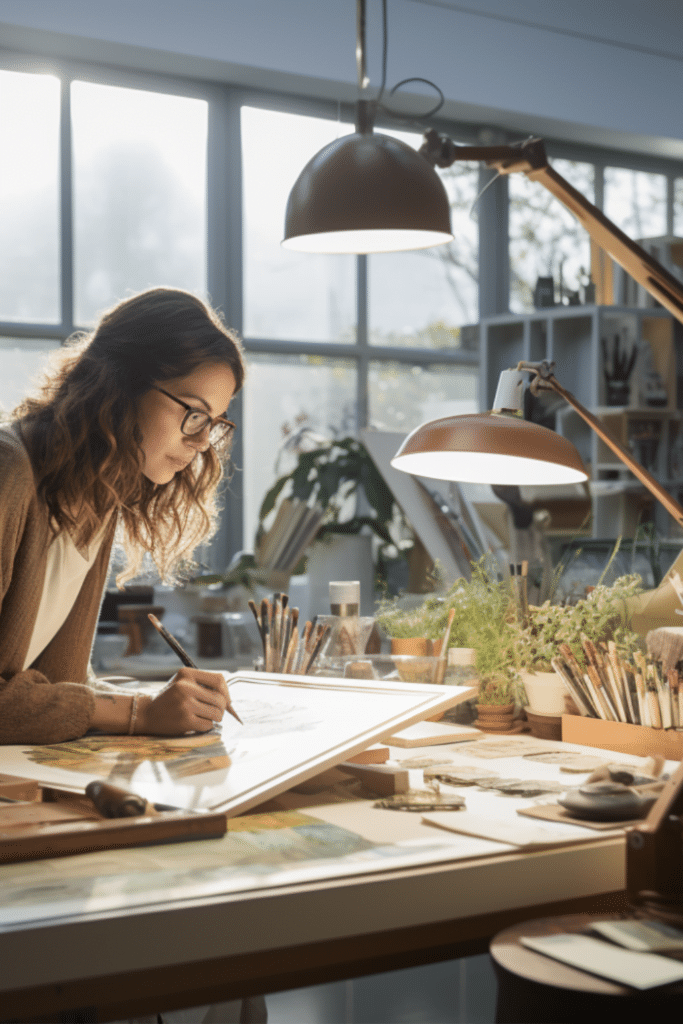
One perspective is that tracing isn’t inherently cheating as long as it’s not a tool for plagiarizing someone else’s work.
Some artists believe tracing is just a means to an end – a shortcut to achieving the desired outcome.
In fact, tracing can be a great way to get an artwork started and even improve your skills as an artist.
With that in mind, it’s crucial for you, as an artist, to decide how to incorporate tracing into your creative workflow ethically.
Understanding the pros and cons of tracing and maintaining an honest and transparent approach to your art can lead to a more informed and better-rounded perspective on the matter.
Defining Tracing
Tracing in Art History
Tracing has been a part of art history for centuries, with artists using various techniques to refine their drawing and painting skills. It’s not uncommon for famous artists like Leonardo da Vinci and Albrecht Dürer to have used tracing methods to study proportions and anatomy. So, as you delve into tracing, you’re following the footsteps of many great artists who came before you.
Different Tracing Techniques
There are a few tracing techniques that you can use to improve your drawing and painting abilities:
- Traditional tracing: This involves placing a transparent paper over an image and tracing the lines with either a pencil or a pen. This method helps you understand the subject’s proportions and get a feel for its shapes and forms.
- Grid method: This technique involves dividing the reference image and your drawing surface into a grid of equal squares. By focusing on one square at a time, you can reproduce the image with greater accuracy. This method is particularly helpful when working on larger drawings.
- Projector tracing: For this technique, you’ll require a projector to cast an image onto your drawing surface. This allows you to trace the outlines and details accurately, and it can be particularly helpful when creating murals or other large-scale artwork.
Remember, tracing is a tool that can help you hone your drawing and painting skills, like understanding proportions and line work. Embrace it as a learning technique, and you’ll undoubtedly see improvements in your art.
Is Tracing Cheating?
Arguments For
Some people believe tracing is cheating because it doesn’t require the same skill level as freehand drawing.
They argue that you’re not developing your technique and observational skills by tracing.
Artists who trace may become too reliant on the process and not work on honing their own abilities. In this sense, tracing might not contribute to your growth as an artist.
Moreover, tracing can also be viewed as a form of cheating if you trace someone else’s artwork without their permission and claim the traced work as your own.
In this case, tracing is dishonest and violates copyright laws.
Arguments Against
On the other hand, many artists and art instructors find tracing to be a valuable learning tool.
Tracing can help you understand the structure and proportions of an object or a subject, which are essential in enhancing your drawing skills.
Tracing can be an effective way to practice and improve your technique if used wisely and not as a crutch.
Tracing can be particularly useful for beginners who are working on getting the right perspective, distance, and facial features.
By incorporating tracing into your practice, you can quickly grasp these fundamentals.
Additionally, professional artists may use tracing as a time-saving technique, especially when dealing with complex subjects or tight deadlines.
It’s important to remember that tracing should be used as a tool for learning and growth, and not as a shortcut to bypass the challenges of drawing. By using tracing in conjunction with freehand drawing, you can improve your skills and become a more versatile artist.
Using Tools for Tracing
There’s no need to feel guilty about using tools to assist with tracing in your artwork. In fact, it can be quite helpful and efficient for certain projects. Some common tools you might use include tracing paper, projectors, and lightboxes. They can add accuracy and efficiency to your work, allowing you to focus on other aspects of your art.
Tracing paper is a translucent material that you can place over a reference image. You can then trace the lines and shapes you need for your drawing or painting, using the reference as a guide.
This method is especially helpful for learning to draw complex shapes or perfecting your line work.
Conversely, projectors are great for scaling up an image or transferring it to a larger surface like a canvas or wall.
By projecting an image onto the surface, you can see exactly where the lines and shapes need to be placed, allowing you to draw or paint with accuracy confidently.
Lightboxes provide a similar function to tracing paper but with the added benefit of backlighting.
When you place your reference image on a lightbox, the illuminated surface allows you to see through the paper more easily, ensuring accuracy in your tracing.
Lightboxes can be especially helpful for working with intricate details or darker images.
Remember, using tools like tracing paper, projectors, and lightboxes doesn’t make you a less skilled artist. It’s all about using the tools at your disposal to help create the best work possible.
So go ahead, give these tools a try and see how they can enhance your artistic process.
Tracing in Art Education
The Role of Tracing for Students
As a student exploring the world of art, tracing can be a valuable tool in developing your skills. It provides a hands-on approach to understanding the intricacies of various subjects while also helping you become more familiar with different techniques. Don’t be afraid to use tracing as a means to learn and grow artistically.
Through tracing, you can observe how an artist has made certain decisions, such as line quality and shading techniques.
This can help improve your own decision-making process when creating original work. Also, tracing can be a great way to practice muscle memory and build confidence in your skills before tackling original pieces.
Learning Proportions and Composition
Understanding proportions and composition is vital when creating any form of art, whether it’s a sketch, painting, or digital illustration. Tracing can help you grasp these concepts more easily.
Tracing various images allows you to analyze and internalize the relationships between different elements within a composition, making it easier to create harmonious and balanced pieces in the future.
When working on proportions, tracing allows you to accurately represent the size and scale of subjects as they appear in reality. This can be especially helpful when drawing human figures, animals, or architectural structures.
By tracing, you’ll become more comfortable with the natural shapes and sizes of your chosen subjects and can apply this knowledge to your unique artistic creations.
Another benefit of tracing is that it helps you develop an eye for composition, something essential for any artist.
By studying and tracing well-composed artwork, you better understand how elements like balance, contrast, and focal points work together to create a compelling piece of art. This knowledge can then be used to enhance your own original creations.
Remember, the ultimate goal of tracing in your art education is to help you develop a strong foundation of skills and knowledge, which can then be applied to your unique projects.
As you progress in your artistic journey, you’ll find that tracing may become less necessary, but in the meantime, embrace it as a valuable learning tool and a way to hone your abilities.
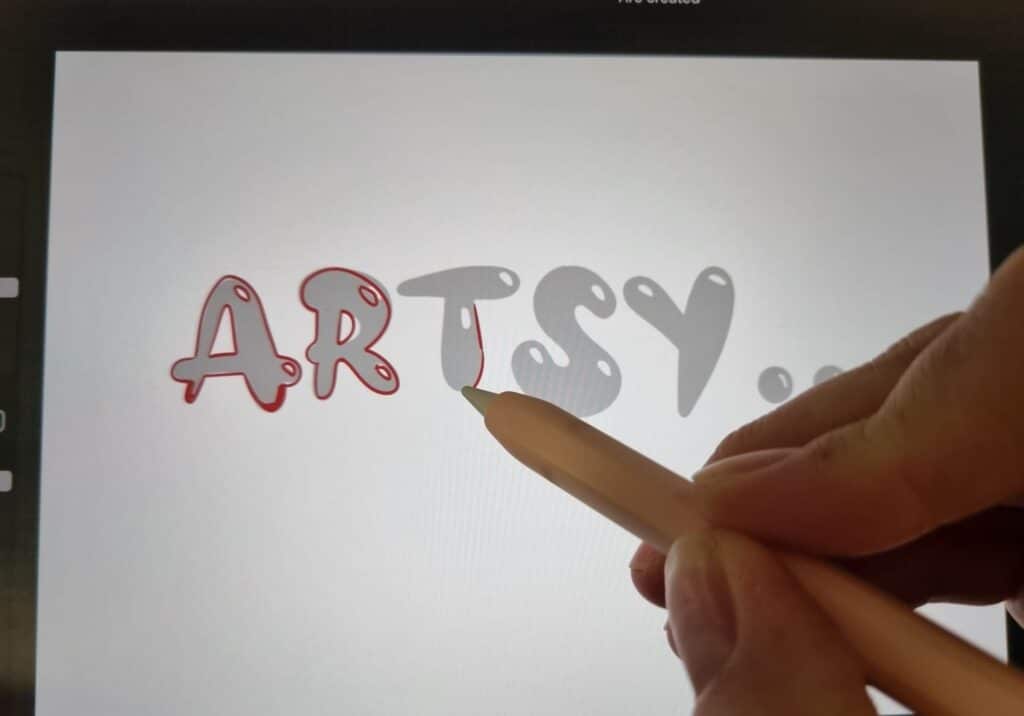
Professional Artists and Tracing
Benefits of Tracing in the Industry
Tracing has its place in the professional art world, offering several benefits to artists. For instance, while working on portraits, tracing can be crucial in ensuring accurate proportions for the subject. Moreover, tracing has enabled artists to create intricate designs, such as those seen in buildings and complex paintings.
Additionally, the rise of digital art has made tracing easier and more accessible than ever.
With tools like drawing tablets and programs like Procreate, artists can trace and refine their work quickly and with better precision. This can save time and improve the overall quality of art.
Stigma and Perceptions
Despite its usefulness, tracing is often seen as a form of cheating in the art world. While many professional artists trace to achieve accuracy and efficiency, others refuse to trace, believing that it compromises the integrity and originality of their work.
This stigma exists mainly because some artists perceive tracing as a shortcut, and therefore view it negatively.
Historically, famous artists like Vermeer used the camera obscura technique, an early precursor to tracing.
This method relied on projecting a scene onto a canvas, allowing the artist to reproduce the image accurately.
Even though tracing has been part of the art world for centuries, the debate around its use continues.
In the end, the decision to trace lies with you as an artist. Some may choose to use tracing to perfect their work, while others will avoid it to maintain their creative independence.
Either way, the most important aspect of art is your passion and dedication to your craft.
Tracing and Copyright
Ethics of Tracing
Tracing can be useful for artists to practice drawing skills or transfer images onto a canvas or wall.
However, it’s important for you to understand the ethical boundaries when tracing someone else’s work.
Tracing an original work without giving proper credit or claiming the traced artwork as your own can be considered cheating and may lead to legal issues related to copyright infringement.
So, as you venture into the art business or build your career, it’s essential to be mindful of these ethical aspects when using tracing in your creations.
Giving Credit Where Due
In the world of art and business, giving credit where it’s due goes a long way in building trust and credibility with your clients and peers.
When you trace a reference image or someone else’s artwork, make sure to give proper credit to the original artist.
This can be done by citing their name and linking to the original work, or by seeking permission from the artist to use their work as a reference.
Being transparent about your tracing process and acknowledging the original source demonstrates your commitment to integrity in your art career.
This not only helps to avoid any potential legal issues related to copyright but also contributes to fostering a positive and supportive environment within the art community.
Remember that tracing can be useful when used ethically and responsibly, providing opportunities to grow and develop as an artist.
Never shy away from giving credit where it’s due, and always value the work of your fellow artists. This approach will surely help build a successful and respected career in the art world.
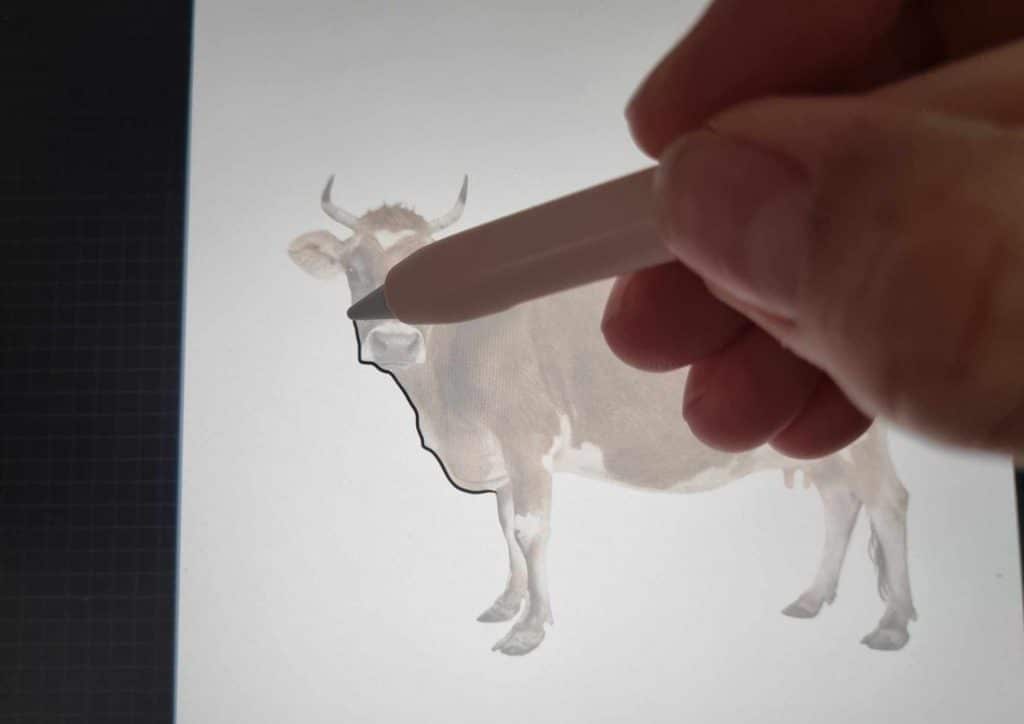
Tracing and Social Media
The Impact on Artists
In the age of social media, artists face new challenges in sharing their work and engaging with the art community. Platforms like ArtistLounge and other art-related subs place a spotlight on the ever-evolving discussion about tracing and its impact on the art culture.
As an artist yourself, it’s essential to recognize the influence of social media on these debates and the advice shared between artists.
When sharing your work online, you may come across opinions that judge tracing as a form of cheating. Some may argue that tracing hinders artistic development and devalues original artwork within the art community.
To navigate these discussions, staying open to constructive criticism and mindful of the reasons behind your tracing methods is crucial.
Online Discussions and Debates
Online platforms promote debate on whether tracing is ethical or not, with varied opinions stemming from personal experiences and perspectives. ArtistLounge, for example, houses collaborative dialogues where artists share their thoughts on tracing and its relationship to cheating.
Engaging in such discussions can provide you with valuable advice and expose you to different viewpoints on tracing.
As part of the art community on social media, you can benefit from participating in these conversations to refine your artistic techniques and expand your horizons.
However, it’s essential to be respectful of different opinions and avoid promoting false or exaggerated claims about the impact of tracing on art culture.
Remember, in the world of art, there is always room for growth and learning. So, take the time to explore the conversations around tracing and social media with a friendly attitude and open mind, and consider how these discussions can enhance your artistic journey.
Improving Artistic Skills
Freehand Drawing vs. Tracing
Regarding your art journey, freehand drawing and tracing have their place in improving your skills.
While drawing freehand may take more effort, it helps you develop a better understanding of perspective and composition.
On the other hand, tracing can save you time, ensure accuracy in your work, and be useful for refining details. Many well-known artists, like Norman Rockwell, have used tracing as part of their artistic process.
Developing Muscle Memory
To improve your artistic abilities, developing muscle memory is crucial. By practicing freehand drawing, you’re giving your hand and brain the necessary exercise to create precise lines and shapes. This ultimately results in increased speed, improved technique, and better control over your art. Remember that practice is essential to build this muscle memory, so keep working at it!
Moving Beyond Tracing
While tracing can be a helpful tool for mastering basic shapes and improving the accuracy of your work, it shouldn’t be relied upon as a crutch.
Use tracing as a starting point to learn about different subjects, like landscapes or more intricate objects.
As you gain confidence in your skills, try challenging yourself by drawing freehand, using references to guide you without tracing the lines directly. This will encourage your growth as an artist and help you develop your unique artistic style.
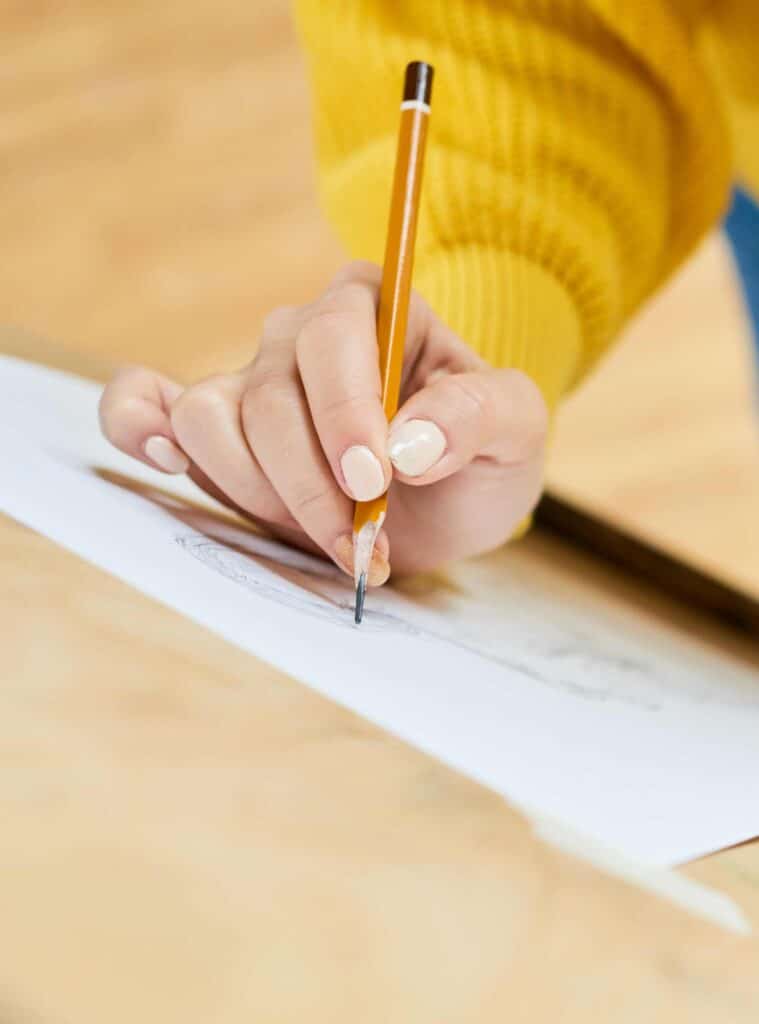
How to Start Tracing
Alright, buckle up, we’re diving into the art of tracing. Now tracing gets a bad rap sometimes, but let’s set the record straight: it’s just a tool.
And not just any tool, but a tool used by none other than the professional artist David Hockney.
This ain’t about tracing art to pull a fast one on someone, nah, this is about refining your drawing or painting process.
So, you’re sitting there with your drawing paper, a reference photo, and a burning desire to create art.
Where do you start? First off, pop that reference photo under your drawing paper. If the paper’s too thick, a light box can help illuminate the details.
Now, gently, start following the lines of your photo. It’s not just about copying though, it’s about understanding the shapes, the shadows, the forms, the whole enchilada of your visual art piece.
And while we’re on the topic of making art, remember this tracing step is just a piece of the puzzle.
It’s a method to create a preliminary sketch for your masterpiece. It’s not the be-all and end-all of creating art.
The magic happens when you start to add your personal touch.
Frequently Asked Questions
Is tracing considered a legitimate art technique?
Yes, tracing can be considered a legitimate art technique. Many artists, especially beginners, use tracing as a way to learn and practice their skills. However, it is important to give credit to the original artist if you use their work as a reference.
Can tracing help improve drawing skills?
Tracing can help improve your drawing skills, especially when starting out. You can learn about the shapes, lines, and forms of various objects and figures by tracing. However, it’s equally important to practice drawing freehand to develop your own unique style and observational skills.
Do professional artists trace their work?
Some professional artists do trace their work, but it depends on the individual and their personal preferences. Tracing can be a useful tool for certain projects, like transferring a design onto a final surface or quickly blocking in a composition. However, most professional artists develop their own techniques and styles without relying solely on tracing.
Is tracing allowed for practice purposes?
Yes, tracing is allowed for practice purposes, as long as you don’t claim the traced artwork as your own original creation. Tracing can be a great way to study the work of other artists and learn new techniques to incorporate into your own artwork.
Can you get in trouble for tracing someone else’s work?
Tracing someone else’s work and claiming it as your own can lead to copyright issues and damage your reputation as an artist. If you want to use someone else’s work as a reference or study, make sure to give proper credit to the original artist and use the traced piece only for your own practice or learning purposes.
Are there consequences for selling traced artwork?
Selling traced artwork without permission from the original artist or owner of the copyrighted material can result in legal consequences, including fines and penalties. If you’re interested in selling your artwork, focus on developing your unique style and creating original pieces that reflect your talents and artistic vision.
Other articles you may enjoy…
Best Sketchbook for Colored Pencils
Upgrade Your Art Station: Top 16+ Drawing Tablet Stands for Creatives
120+ Preppy Drawing Ideas: Fun and Chic Inspiration
How to Get Good at Drawing Fast: Tips and Tricks for Improving Your Skills Quickly
